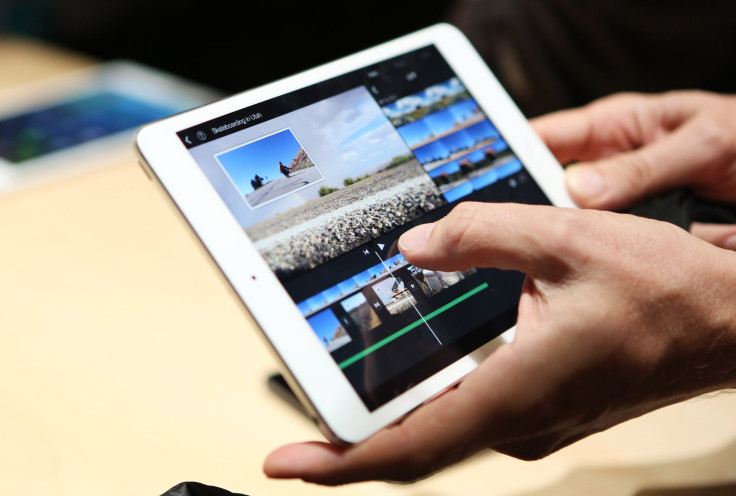Apple iPad Mini ‘2’ Retina Release Date Arrives: Why Such A Quiet Launch This Time?

We originally predicted Apple Inc. (NASDAQ:AAPL) would release the new iPad mini with Retina display on Friday, Nov. 22, but Apple surprised everyone by quietly launching the Retina iPad mini in its retail and online stores on Tuesday.
“The response to iPad Air has been incredible, and we’re excited for customers to experience the new iPad mini with Retina display,” Apple Marketing Senior Vice President Phil Schiller said in a press release. “We think customers will love both of these thin, light, powerful new iPads, and we’re working hard to get as many as we can in the hands of our customers.”
Every new iPhone or iPad release comes with much fanfare: Typically, once Apple unveils the tablet at a Tuesday or Wednesday media event, the company waits until the following Friday to officially release its newest device, which almost always creates long slithering lines outside its many Apple Stores dotted around the country. The traditional release formula works, as Apple continues to announce record-breaking launch weekends almost every year, it seems. But with this year's iPad lineup, Apple unveiled two new models in October but was only able to release the iPad Air on Nov. 1; the iPad mini with Retina display would have to wait for its release date in “late October.”
But why was the release date of the Retina iPad mini delayed in the first place? According to sources from Apple’s supply chains in Asia, Apple was experiencing issues creating quality panels that met the company’s specifications, and high rejection rates of the new iPad mini’s 7.9-inch Retina display were reportedly the main reason behind such low yields of the tablet. But within the last month, Apple reportedly reached out to Samsung to help manufacture Retina displays for the new iPad mini in an effort to boost production, since panels from the company’s main suppliers at Sharp and LG Display continued to suffer from screen burn-in issues, which aren’t visible to users but regardless do not meet Apple’s high quality standards.
These supply issues are the likely reason Apple decided to quietly release the iPad mini with Retina display on Tuesday. Without a substantial volume of new iPad mini units, Apple probably didn’t feel confident it could hold a massive release date launch like it did for the iPad Air; many Apple Stores were given hundreds of iPad Air units to sate the demand on its Nov. 1 release date. But even the iPhone 5s, which saw similar supply constraints, especially with its silver and gold models, was supplemented by the simultaneous release of the iPhone 5c, so Apple at least provided options for consumers even if supply was low. Since Apple doesn’t have the tools it needs to effectively pull off a big launch, the Retina iPad mini saw a quiet but strategic release, as the company will still be able to build momentum for its two new tablets before the all-important Thanksgiving week, which also coincides with Black Friday and Hanukkah this year.
About The iPad Mini With Retina Display
The second-generation iPad mini features the same form factor as its predecessor but now has double the pixel resolution thanks to its new Retina display, in which the individual pixels on the screen can't be discerned with the naked eye; in fact, the new iPad mini will release with the same number of pixels as the new iPad Air, thanks to its 2048 x 1536 resolution, but release with a higher pixel density at 326 ppi.
Apple also upgraded a number of internals within the Retina iPad mini. The first-generation iPad mini ran on a dual-core A5 chip, but the 2013 iPad mini with Retina display will release with an A7 chip and M7 motion co-processor, which are the same chips from this year's iPhone 5s release and the same chips that run the larger iPad Air. These new internals add up, and the Retina iPad mini is a bit heavier than the first iPad mini (331 grams versus 308 grams, respectively), and also a bit thicker, too (7.5mm vs 7.2mm); however, these minor differences will be hard to notice unless you own a first-yen iPad mini. The Retina iPad mini will also release with iOS 7 built-in, and will release in two color options: white and silver, and black and space grey.
The price of the iPad mini with Retina display starts at $399 and $529 for Wi-Fi only and cellular, respectively, while the first-generation iPad mini will now release at a lower $299 price point. The price of the Retina iPad mini ranges up to $699 for 128 GB of space but Wi-Fi only, and $829 for 128 GB of storage plus Wi-Fi and cellular connectivity.
What do you think of the new Retina iPad mini? Do you prefer the smaller form factor, or are you a bigger fan of the iPad Air? Sound off in the comments section below.
© Copyright IBTimes 2024. All rights reserved.






















